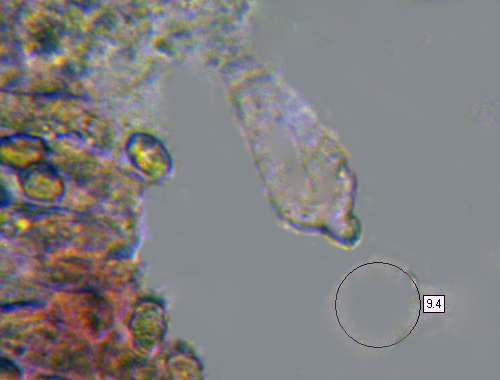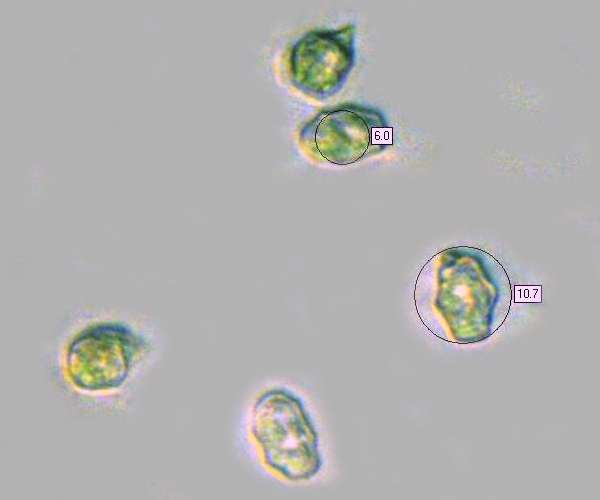Entoloma porphyrophaeum (Fr.) P. Karst. - Lilac Pinkgill
Phylum: Basidiomycota - Class: Agaricomycetes - Order: Agaricales - Family: Entolomataceae
Distribution - Taxonomic History - Etymology - Identification - Culinary Notes - Reference Sources
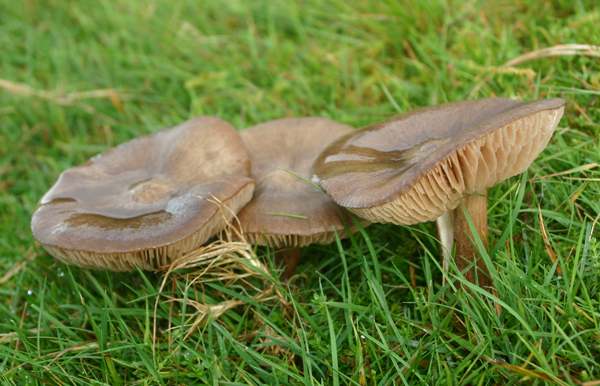
This tall entoloma is a rather uncommon grassland species and quite variable in colouring; however, the purplish hue is usually evident against a background that ranges from buff through various shades of brown.
One of the endearing traits of the largish grassland pinkgill is the longevity of its fruitbodies. These mushrooms can remain standing for several weeks if not eaten by slugs or knocked over by the feet of people like me who are fascinated by such fungi.
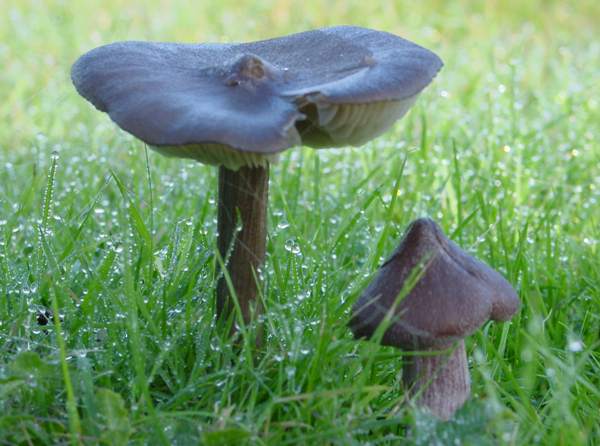
Distribution
The Lilac Pinkgill is a farly common find in unimproved grassland throughout Britain and Ireland; it occurs also throughout most of northern and central mainland Europe and in many parts of Asia. This species has also been recorded in parts of North America.
Taxonomic history
This species was described scientifically in 1857 by the great Swedish mycologist Elias Magnus Fries, who gave it the binomial name Agaricus porphyrophaeus. (At that time most gilled fungi were initially placed in a gigantic Agaricus genus, which has since been slimmed down with most of its contents being transferred to other newer genera.)
The currently-accepted scientific name dates from 1879, when Finnish mycologist Petter Adolf Karsten (1834 - 1917) transferred this species to the genus Entoloma.
Synonyms of Entoloma porphyrophaeum include Agaricus porphyrophaeus Fr., Rhodophyllus porphyrophaeus (Fr.) J. E. Lange, and Trichopilus porphyrophaeus (Fr.) P. D. Orton.
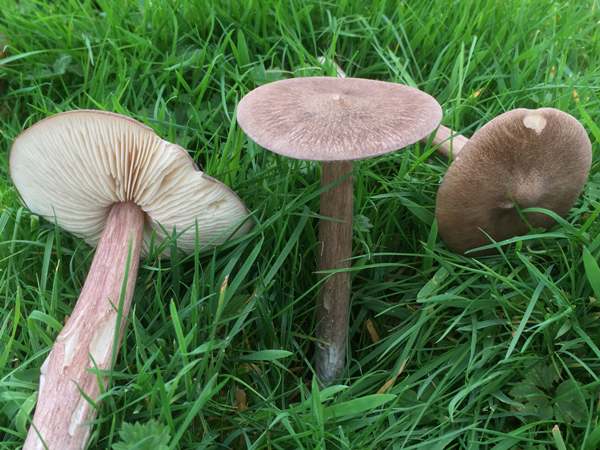
Etymology
The generic name Entoloma is derived from the ancient Greek words entos, meaning inner, and lóma, meaning a fringe or a hem. It is a reference to the inrolled margins of many of the mushrooms in this genus.
The specific epithet porphyrophaeum probably comes in part from the Greek porphyry, which is a purple igneous rock; and the suffix phaeum means dusky. Dusky purple is a fair description of some specimens of this fascinating fungus, but the English common name Lilac Pinkgill seems more appropriate for paler examples.
Identification guide
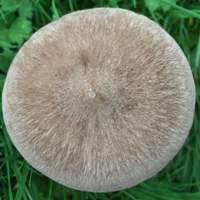 |
CapWith a distinct umbo, the radially-fibrillose cap is purplish-brown and typically 5 to 8cm in diameter (and hence usually much larger than most other common Entoloma species). |
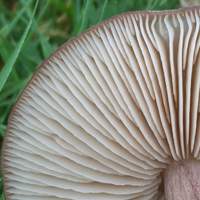 |
GillsFree or emarginate; white at first, becoming brownish pink at maturity. |
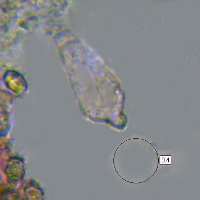 |
Cheilocystidia20-60 x 7-20µm, lageniform Flask-shaped) to lecythiform (shaped like a bowling pin), often distinctly capitate. |
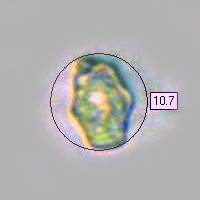 |
SporesVery irregular, many-angled, often with nodular protrusions; 8-12 x 6-8μm. Spore printPale pink. |
Stem |
Concolorous with cap or slightly paler, fibrous. |
Odour/taste |
Not distinctive. |
Habitat & Ecological role |
Singly or in small groups in moist grassland areas, often in upland areas as well as lowland sites. |
Season |
Summer and autumn. |
Similar species |
There are several entolomas of similar size and colour; the fibrous cap helps to distinguish Entoloma porphyrophaeum. |
Culinary Notes
Entoloma porphyrophaeum is reported to be edible, althought It is also thin-fleshed and insubstantial to be worth collecting. There is also a risk of confusing this species with some of the pinkgills that are known to be seriously tocix or even deadly poisonous - for example the Livid Pinkgill Entoloma sinuatum.
Reference Sources
Fascinated by Fungi, 2nd Edition, Pat O'Reilly 2016, reprinted by Coch-y-bonddu Books in 2022.
Knudsen H., Vesterholt J. (eds) Funga Nordica: agaricoid, boletoid and cyphelloid genera - Nordsvamp, 2008
Dictionary of the Fungi; Paul M. Kirk, Paul F. Cannon, David W. Minter and J. A. Stalpers; CABI, 2008
Taxonomic history and synonym information on these pages is drawn from many sources but in particular from the British Mycological Society's GB Checklist of Fungi.
Acknowledgements
This page includes pictures kindly contributed by Simon Harding.
Fascinated by Fungi. Back by popular demand, Pat O'Reilly's best-selling 450-page hardback book is available now. The latest second edition was republished with a sparkling new cover design in September 2022 by Coch-y-Bonddu Books. Full details and copies are available from the publisher's online bookshop...
